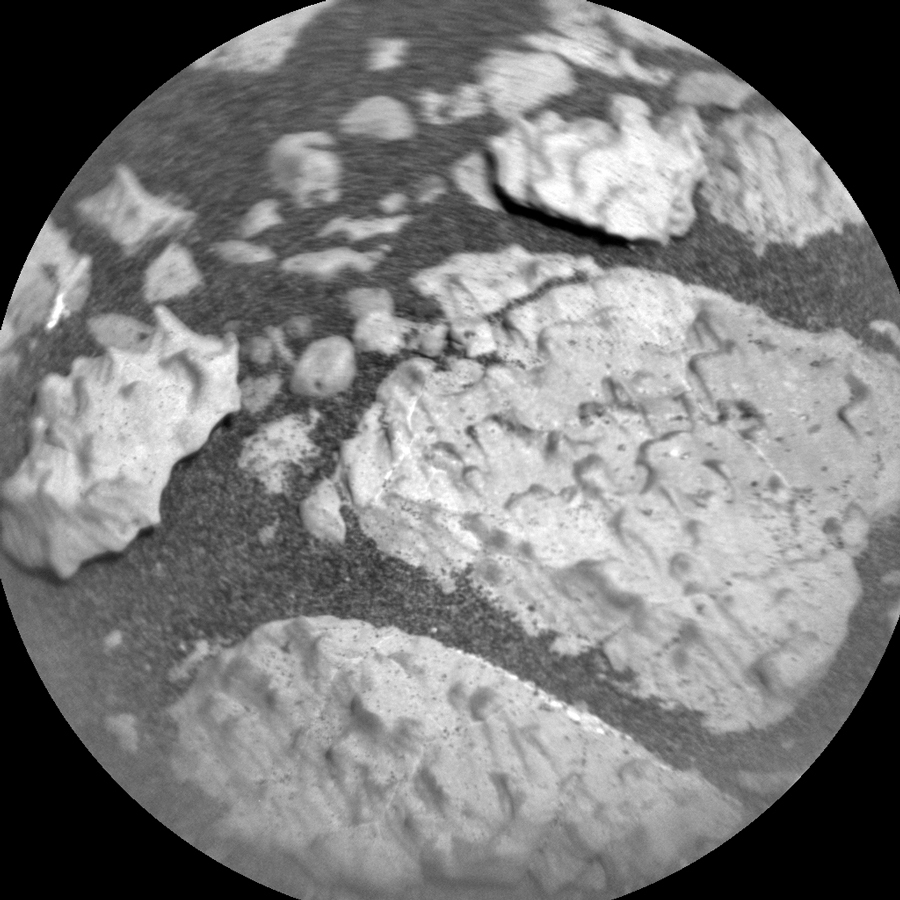2 min read

Carrying on with our drill campaign at the “Glasgow” site, today’s one-sol plan is short, sweet, and all about collecting chemistry data with ChemCam and CheMin! The plan includes a single one-hour science block that is packed full of ChemCam observations of three nearby targets, including bedrock target “Gutcher,” nodular bedrock target “Lochbuie,” and vein target “Thistle Street.” The target name “Lochbuie” might sound familiar – that is because over the last few weeks, Curiosity has analyzed several bedrock targets off to the side of the rover that contain varying amounts of nodules. The bedrock in this area is distinctly fractured, and the science team is interested in assessing whether the concentration and/or chemistry of nodules varies with distance from nearby fractures. For continuity, we’ve given the targets in this vicinity names that contain “Loch.” Today, Lochbuie joins the ranks of previously analyzed nodular targets in the area including “Loch na Keal,” “Loch Olabhat,” “Loch Trool,” and “Bishops Loch.” The image above shows the nodular texture in the “Loch Olabhat 2” target and was taken by ChemCam’s Remote Micro Imager. If you look closely, you can see the small, dark laser pits made by ChemCam that track horizontally across the nodule-rich rock in the center-right of the image.
In addition to ChemCam, we’ll also collect some environmental observations, including a Navcam line of sight image, dust devil movie, and a Mastcam tau measurement. Overnight, Curiosity will perform its second CheMin analysis of Glasgow drilled material.
Written by Rachel Kronyak, Planetary Geologist at NASA's Jet Propulsion Laboratory







